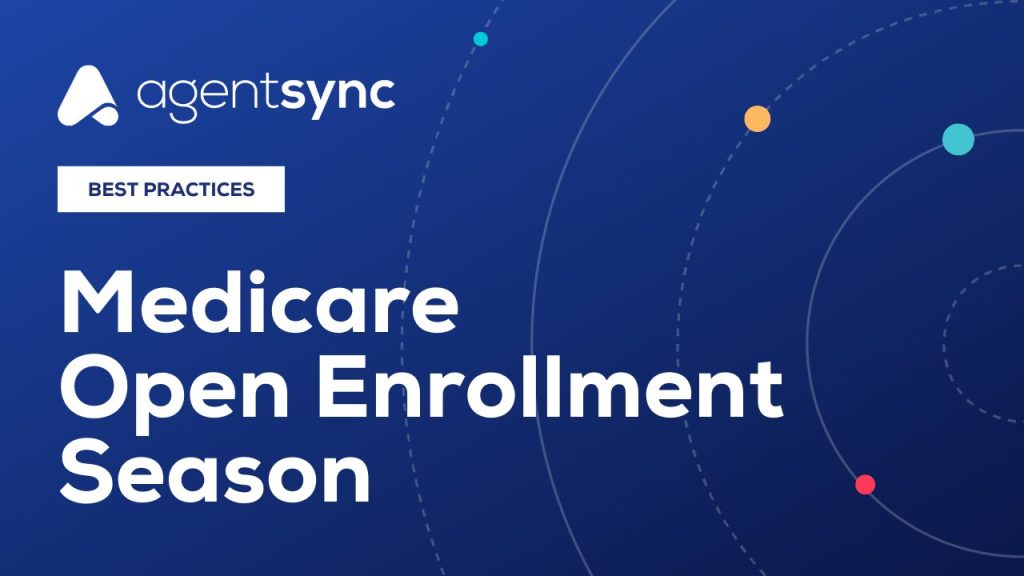Medicare Open Enrollment Season: The Big Picture
It’s almost that time of year again. No, we’re not talking about spooky season, the holiday season, or even ski season. Believe it or not, we’re talking about something far more exciting: Medicare open enrollment season!
Before you go rolling your eyes at our big nerd appreciation of Medicare open enrollment, remember: In 2021 there were nearly 63 million people enrolled in the Medicare program.
That’s a whole lot of people. And if you’re an insurance producer, agency, carrier, or MGA/MGU responsible for enrolling even a portion of these Medicare beneficiaries, open enrollment season is an opportunity to help place elderly and disabled Americans in the insurance plan best suited to meet their needs. So, if you ask us, that’s a season to celebrate.

Why does a federal program require enrollment?
With all insurance, specific policies provide coverage for specific risks. Medicare is no different. There are a couple of types of coverage available to those eligible for Medicare.
- Original Medicare – Americans who receive Social Security benefits are automatically enrolled in Medicare Part A and Medicare Part B plans when they turn 65.
- Medicare Part A – This covers inpatient hospital care, skilled nursing facility care, hospice benefits, and home health services.
- Medicare Part B – This covers doctor’s appointments, preventive care, durable medical equipment, some prescription drugs, mental health services, and ambulance services.
- Medicare Advantage (Medicare Part C) – Sold by private insurers, these are offered as an alternative to the original Medicare plans. They generally include the same coverage as the original Medicare plans with the added coverage of hearing, dental, and vision care. They often have lower premiums and limit how much a person will pay out of pocket. Sometimes, Medicare Advantage plans automatically include Medicare Part D coverage. Those interested in Medicare Part C coverage must enroll in a plan of choice.
- Medicare Part D – Medicare Part D is offered through private insurers. It covers the cost of both generic and brand-name prescription drugs. Those interested in Medicare Part D coverage must enroll in a plan of choice.
- Medicare Supplement Insurance (Medigap) – Medigap is sold through private insurers and helps to fill the gaps in the original Medicare plans. To enroll in a Medigap policy, one must first be enrolled in Medicare Part A and Medicare Part B.
Medicare Part A and Medicare Part B operate through automatic enrollment for those receiving Social Security benefits. However, those who don’t receive Social Security benefits and those who wish to enroll in Medigap, Medicare Advantage, or Medicare Part D must do so in either initial enrollment, special enrollment, general enrollment, or Medigap open enrollment.
What’s with all these enrollment options?
Those eligible for Medicare have three primary opportunities to first enroll in the plan that’s right for them.
- Initial enrollment – This seven-month period begins three months before the birth month when someone turns 65 and ends three months after that birth month. In this time, they’ll have the opportunity to enroll in a Medicare plan of their choosing. Failing to enroll in Medicare Parts A, B, or D during the initial enrollment period at 65 could result in expensive penalties if you change your mind and enroll in them later. The exceptions here are if that person opted into Medicare Advantage in lieu of either Medicare Parts A, B, or Medicare D, or if they are still employed and covered by their employer’s health care plan.
- Special enrollment – Not everyone qualifies for a special enrollment period. This is a two-month period that begins the month after a person’s employment ends or the month after they lose their qualifying employer insurance, whichever comes first.
- General enrollment – Those who miss initial enrollment and aren’t eligible for special enrollment will need to wait until the general enrollment period from Jan. 1 through March 31. Enrollment at this time will result in high penalties and coverage doesn’t begin until July 1. All health costs incurred before coverage begins will need to be paid directly by the person.
- Medicare Supplement Insurance (Medigap) open enrollment – This is a six-month period that begins on the first day of the month that a person turns 65 years old and enrolls in original Medicare. At this time, Medigap can be purchased regardless of health status. This means insurers are required to charge people the same price regardless of whether they’re healthy or have pre-existing conditions. After this open enrollment period, insurers have the right to charge more or deny coverage based on pre-existing conditions.
Once already enrolled in Medicare coverage, there are two primary opportunities to change that coverage and switch plans.
- Annual open enrollment – At this time, those who receive Medicare coverage can assess their health coverage and make changes based on developing needs. Open enrollment is from Oct. 15 through Dec. 7 each year.
- Special circumstances and special enrollment period – Someone already enrolled in Medicare Advantage and Medicare Part D coverage may be eligible to make changes outside of specific enrollment periods if certain life changes occur. Changes to coverage, a physical change of address, and a change in employment status are all reasons someone may be eligible for a change.
Tell me more about open enrollment
Medicare open enrollment exists for a very specific purpose. As such, there are clear guidelines about what a person already enrolled in Medicare coverage can and can’t do at this time.
To ensure their coverage best meets their needs, those enrolled in Medicare can switch from a Medicare Advantage plan to a different Medicare Advantage plan, drop a Medicare Advantage plan and return to original Medicare coverage, and join a Medicare prescription drug plan.
However, they cannot switch from original Medicare to a Medicare Advantage Plan, join a Medicare prescription drug plan if enrolled in original Medicare, or switch between Medicare prescription drug plans if enrolled in original Medicare.
Why are producers so important for the Medicare enrollment process?
Those looking for Medicare coverage are entering a period in their lives when they’ll need more health care than ever before. As a result, it’s absolutely critical that they have the right plan to meet their needs.
But understanding Medicare plan specifics and navigating the ins and outs of Medicare enrollment is enough to put even an experienced producer’s head in a pretzel. That’s why we’ve built out this handy series of best practices for Medicare enrollment for both producers and agencies, carriers, and MGAs/MGUs.
Learn how AgentSync can help you onboard more producers before open enrollment season.
About AgentSync
AgentSync powers rapid growth for insurance carriers, agencies, and MGAs by offering modern tools for producer management. With its customer-centric design, seamless APIs, and automation, AgentSync’s products reduce friction, increase efficiency, and maintain compliance, ultimately helping to improve the broker onboarding, contracting, licensing, and compliance processes.
Founded in 2018 by Niranjan “Niji” Sabharwal and Jenn Knight, and headquartered in Denver, Colo., AgentSync has been recognized as one of Denver’s Best Places to Work, as a Forbes Magazine Cloud 100 Rising Star, an Insurtech Insights Future 50 winner, and is ranked 88 in Forbes – America’s 500 Best Startup Employers 2022.

